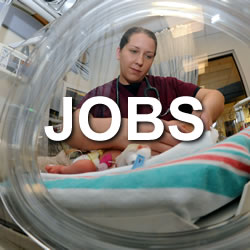Women, Listen to your body... It might save you!
The HWN Team | Cutting Edge

image by: nasirkhan
Heart disease and ovarian cancer no longer need to be such aggressive killers. You know yourself better than anyone else.
It's so common - you're exhausted as usual and your stomach is a bit upset but that's no surprise with the high pressure schedule you've been keeping up all day. You're also feeling a little bloated so maybe your period's going to start early and naturally, you have to empty your bladder again.
Although this may sound pretty normal for all of us who are juggling marriage, career, motherhood and some community service… and it probably is in fact pretty normal, these are also some of the symptoms of two problems that can kill you, Heart attack and Ovarian cancer.
Heart disease is the number one killer of women whereas ovarian cancer is less common but has a high mortality rate.
Heart disease is the number one killer of both women and men and diseases of the heart have become the leading killer of women in the United States. Since 1984, heart disease has claimed more women than men. Approximately 500,000 women die each year from cardiovascular disease in the United States alone. In fact, women account for nearly half of all heart attack deaths. Cardiovascular disease claims more female lives than breast cancer, accidents and diabetes combined.
Ovarian cancer is the eighth most common cancer among women in the United States and the fifth leading cause of cancer-related death among U.S. women. One in 72 women will develop ovarian cancer (lifetime risk) and one in 95 women will die from ovarian cancer. Do you know one hundred women? This statistic means you should expect one of them to die from ovarian cancer. Each year, approximately 20,000 American women are diagnosed with ovarian cancer and about 15,000 women die of the disease. Approximately 174,236 women living in the United States have ovarian cancer or have a history of ovarian cancer.1-4
There are many diseases that are "silent" or whose symptoms mimic lesser problems. People can be unaware of diabetes or hypertension, for example. Left untreated, both chronic medical problems can slowly destroy your quality of life or take your life. Other disorders are sneaky – their symptoms mimic lesser problems, allowing the underlying issue to go undetected until there's a crisis. Gallbladder problems for example, can lead to gas, indigestion, heartburn and fatigue, nuisance symptoms that most people accept as part of living and manage with over-the-counter medications or benign neglect. A malfunctioning gall bladder often doesn't get diagnosed until there is a classic gall bladder attack with severe pain and nausea.
So why do we want to shine a special light on heart disease and ovarian cancer?
Heart disease is often fatal without early detection whereas ovarian cancer frequently goes undetected until it is advanced and then it is usually fatal.
- Both can be fatal without early detection
- Delay in diagnosis - Both have sneaky symptoms, mimic lesser disorders, physicians and other health care providers tend to dismiss or misdiagnose these symptoms, and there are no simple screening tools
- Better information and awareness can result in saved lives - distinct patterns of symptoms have been identified.
There is strong evidence that getting to the hospital quickly during a heart attack is critical, since early treatment saves both lives and heart muscle. But there is often a delay between the time a person begins experiencing symptoms and when they seek medical care.
The American Heart Association reviewed over 100 studies of heart attack victim behavior and discovered that most patients do not seek treatment in a timely manner. More than 50% of the 1.2 million people who suffer a heart attack each year in the United States die in an emergency department (ED) or before reaching a hospital, within an hour of symptom onset. Survival rates are improved by up to 50% if treatment is started within one hour of symptom onset and by 23% if it is achieved within three hours of symptom onset. In one study, delaying treatment by 30 minutes reduced average life expectancy by one year.
Researchers discovered that old age, being a woman, having less education, less money or being black are associated with increased delays in seeking treatment.5
Some of the factors leading to delays are:
- Symptoms aren't severe or don't fit "classic" heart attack symptoms
- At home when the symptoms begin
- Lives alone
- Long distance to hospital
- Embarrassed about possible false alarm or inconvenient time (after hours/weekend)
- Waiting to see if symptoms get worse
- Not understanding that survival is time dependent
- Calling a doctor instead of emergency service, unfortunately, doctors are less likely to believe a woman is having a heart attack than a man.6
Ovarian cancer is also not easily diagnosed.
This is because its initial symptoms are mild, often attributed to other causes and there is no specific diagnostic test for ovarian cancer. There is an 85-93% survival rate if ovarian cancer is diagnosed at Stage I - contained within the ovary (or ovaries). However, less than 20% of ovarian cancer cases are diagnosed at this early stage. Instead, about 75% of all ovarian cancers are diagnosed after the cancer has spread from the ovaries to other parts of the body, dramatically reducing survival rates:
Stage II 64-79% survival after five years - The cancer is in one or both ovaries and has involved other organs (such as the uterus, fallopian tubes, bladder, the sigmoid colon, or the rectum) within the pelvis.
Stage III 32-52% survival after five years - The cancer involves one or both ovaries and has spread beyond the pelvis to the lining of the abdomen and/or has spread to lymph nodes.
Stage IV 18% survival after five years - The cancer has spread to the inside of the liver, the lungs, or other organs located outside of the abdominal cavity.
Here's what every woman needs to know about heart disease.
You can probably recite the classic heart attack symptoms, i.e., chest pain radiating down the left arm, crushing sensation, shortness of breath, sweating. That's absolutely correct, if you're a man! Unfortunately, researchers have only recently discovered that women's heart attack symptoms are often very different from those classic symptoms that we've all heard about for years.
In a ground breaking study of female heart attack victims, 95% of women studied said they knew their symptoms were new or different a month or more before experiencing their heart attack. The symptoms most commonly reported were unusual fatigue, sleep disturbance and shortness of breath. Fewer than 30% reported having chest pain or discomfort prior to their heart attacks, and 43% reported no chest pain during any phase of the attack.7
Women's major symptoms prior to their heart attack (a month or so earlier):8
- Unusual fatigue - 70%
- Sleep disturbance - 48%
- Shortness of breath - 42%
- Indigestion - 39%
- Anxiety - 35%
Women's major symptoms during a heart attack:
- Shortness of breath - 58%
- Weakness - 55%
- Unusual fatigue - 43%
- Cold sweat - 39%
- Dizziness - 39%
And here's what women need to know about the whispering disease, ovarian cancer.
Similar to heart disease ovarian cancer symptoms are often very mild in its early, most easily curable stages. A 2004 study of women with ovarian cancer discovered that crampy abdominal pain and urinary urgency, frequency or incontinence were the most commonly documented symptoms in women who had Stage I and II ovarian cancer. In patients with Stages III and IV cancer, abdominal pain and increased abdominal girth were the most commonly documented symptoms.9,10
These rather non-specific symptoms are often shrugged off or attributed to something else. Common misdiagnoses include irritable bowel syndrome, stress and depression. So how do you pinpoint when your abdominal cramps are simple constipation or a passing virus versus early cancer? The key seems to be recognizing whether the symptoms continue or get worse. With most digestive disorders, symptoms tend to come and go, or they occur in certain situations or after eating certain foods. With ovarian cancer, there's typically little fluctuation — symptoms are constant and gradually worsen.
We now know that there are clusters of symptoms that can help to identify these disorders in their earliest stages.
Many women ignore their heart attack symptoms because they are too minor or don't fit the classic pattern of symptoms. Unfortunately, doctors also fail to recognize these symptoms as heart attack red flags for the same reasons. Both healthcare providers and women need to change their thinking about women and heart attacks. If your gradual shortness of breath, fatigue, sleep disturbance or indigestion seems to be continuing, see your doctor right away and ask to be evaluated for heart disease, even if it's not suggested. If you start to feel sweaty, more short of breath and dizzy, call 911. Better a false alarm than a funeral.
Follow the same thinking for ovarian cancer. Recognize that if you have a family history of ovarian cancer, you are at much higher risk for developing the disease. If you have abdominal symptoms like cramping or urinary symptoms such as frequency or urgency almost daily for more than a few weeks, you should see your doctor, preferably your gynecologist. Prompt medical evaluation may lead to detection at the earliest possible stage of the disease.
To add insult to injury, there is no simple screening test for identifying women who may develop a heart attack or ovarian cancer.
Both require time consuming workups. Specialized 'stress the heart' tests such as the treadmill stress test or cardiac scans are usually required to sort out women who have the potential to have a heart attack whereas the diagnosis of ovarian cancer is made by a combination of symptoms, blood tests, manual examination and special studies including pelvic ultrasound.
The manual exam relies on the doctor to physically feel masses. If masses are felt, the cancer is typically advanced. The pelvic ultrasound is the most reliable way to evaluate the ovaries for cancer. This procedure, in conjunction with the other tests, creates a diagnostic tool kit for ovarian cancer. The blood test, CA-125, measures a protein associated with cancer.
If the CA-125 is elevated there's a good chance that cancer is present, although since other situations such as being premenopausal can also elevate CA-125, there are many false positives. On the other hand, the CA-125 is only elevated about half the time, even when ovarian cancer is present, leading to many false negatives as well. As a result, the CA-125 blood test is used together with other tests.
Take home message
- Listen to your body...and get help for suspicious symptoms
- Learn how to identify early symptoms of heart attack and ovarian cancer
- Tell every woman you know.
- If you experience these symptoms, seek medical care without delay.
- If your doctor seems willing to dismiss the symptoms as something else without testing to rule out impending heart attack or early stage ovarian cancer, stop and have a discussion. Ask why these symptoms do not merit further testing, what would need to change about these symptoms to prompt further testing, how long you should continue to experience these symptoms before returning for further evaluation and which other symptoms should you look for to confirm or rule out the need for further testing?
The Bottom Line
You may find that you are stressed, depressed, have digestive problems or are perimenopausal…and that's good to know so you can work on helping yourself reduce or eliminate those problems. Or, you may discover that your body is telling you to take action and save your own life. Listen to it. It's worth paying attention.
Published September 8, 2009, updated June 1, 2012
References:
- Leading Causes of Death in Females United States 2007, Centers for Disease Control
- Bessre R, Leading Causes of Death Among Women Show Surprises, Yahoo, Feb 10, 2006
- Cancer Facts and Figures, American Cancer Society, 2008
- Ovarian Cancer Statistics, Ovarian Cancer National Alliance
- Study finds timing is everything for some heart attack patients, American Heart Association, July 30, 2009
- Reducing Delay in Seeking Treatment by Patients With Acute Coronary Syndrome and Stroke, American Heart Association Scientific Statement, June 2006
- Canto J, Do Women present differently than Men? Myth versus reality,
- Women's Early Warning Symptoms of Acute AMI, National Institute of Nursing Research, NIH, 2003
- Ovarian cancer symptoms, Mayo Clinic, November, 2008
- Ovarian cancer does have early warning signs, Science Daily, Nov 19, 2004

Introducing Stitches!
Your Path to Meaningful Connections in the World of Health and Medicine
Connect, Collaborate, and Engage!
Coming Soon - Stitches, the innovative chat app from the creators of HWN. Join meaningful conversations on health and medical topics. Share text, images, and videos seamlessly. Connect directly within HWN's topic pages and articles.
















